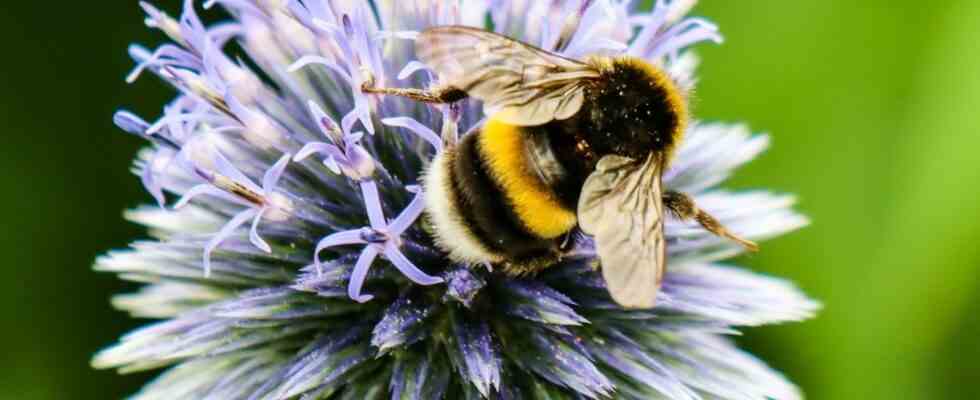Bumblebees are among the best-known insects – if only because of their size, the dense, multi-colored striped fur and the buzzing noise they buzz around with in spring. They are also feared by many because of their sting. In fact, they are harmless. Otherwise, most people know little about the species. The musician Willy Astor, for example, asks in his song “Hummelhonig”: “Why is there so little bumblebee honey? There is hardly any bumblebee honey – why?” The Bund Naturschutz and the Institute for Biodiversity Information (IfBI) now want to provide information about bumblebees.
Both organizations switched on their Hummel hotline until Easter Monday. Interested parties can send photos of bumblebees with postcode and date of finding to 0151/18460163 via Whatsapp. Experts around the Hummel specialist and IfBI boss Klaus Mandery immediately determine the respective type and then send the information back to the sender. In the 2021 campaign, the bumblebee clearly took first place. The field bumblebee and the stone bumblebee followed in second and third place.
Bumblebees are wild bees. They are mainly distributed in the northern hemisphere. There are 250 species worldwide. In Germany and thus in Bavaria, 41 are considered native. But only seven are common in the gardens and parks here, among them, of course, the three mentioned above are the most prominent. About two-thirds of bumblebee species are on the red list, Mandery says, “the fruit bumblebee and others are already extinct.” But the number of common bumblebee species is also shrinking dramatically. Just 15 years ago there were twelve species in this category. As with many other insect species, the main reason for the decline is intensive agriculture. As a result, there are fewer and fewer habitats for bumblebees.
Like bees, bumblebees are socially organized animals. They form states with workers, drones and a queen bumblebee. However, such a colony of bumblebees only lives for one summer and dies in the fall. Only the mated young queens hibernate and begin nest building and founding of a new colony in early spring. They are the ones that can now be well observed. Because the bumblebee queens fly out at outside temperatures of two degrees Celsius, while bees only fly at at least ten degrees.
And what about Willy Astor’s “Bumblebee Honey”? Bumblebees also produce honey as food for themselves and especially for their larvae. In contrast to bee colonies, which actually produce all the honey as a winter supply, bumblebees hardly ever build up any stocks. A colony of bumblebees doesn’t need a supply of honey for the winter, which the beekeepers could then skim off. It perishes in the fall. So bumblebees produce much less honey than bees. And that, as Willy Astor also sings, is eaten by the bumblebees themselves.

